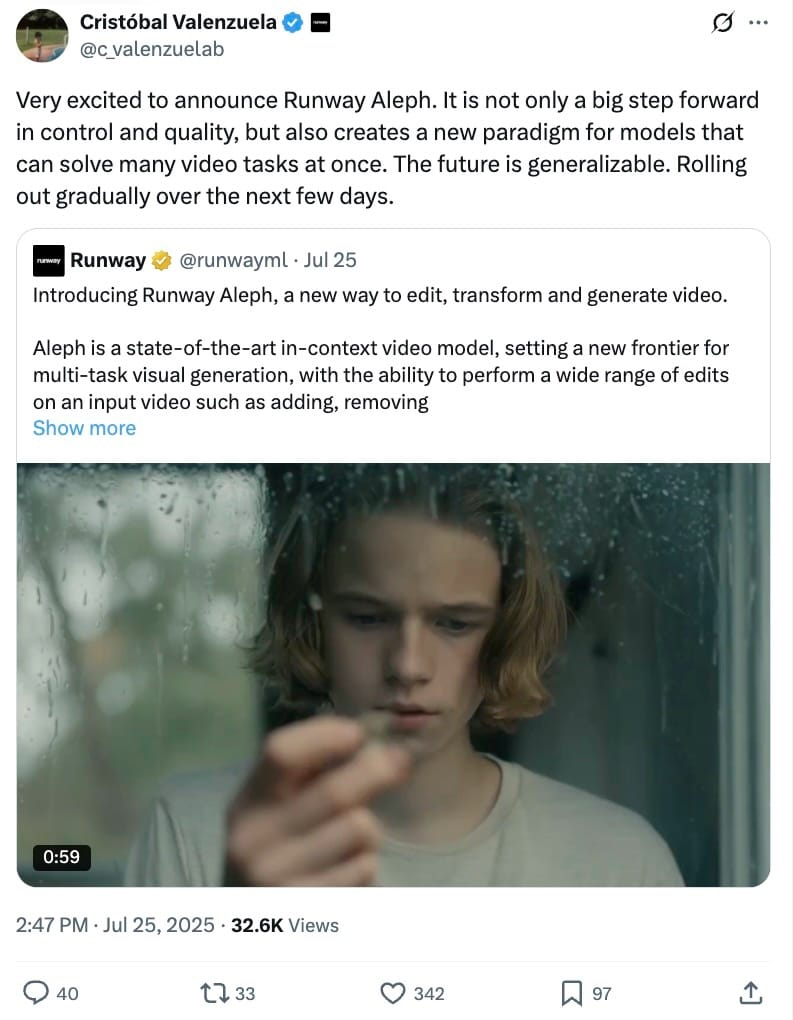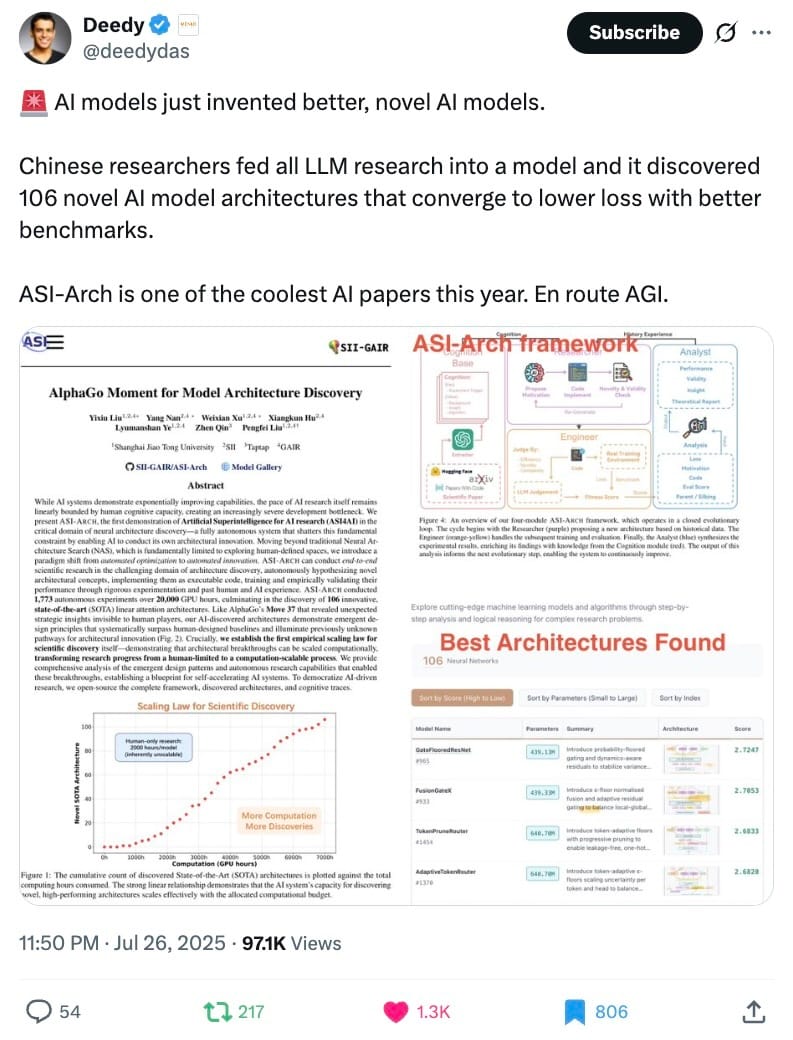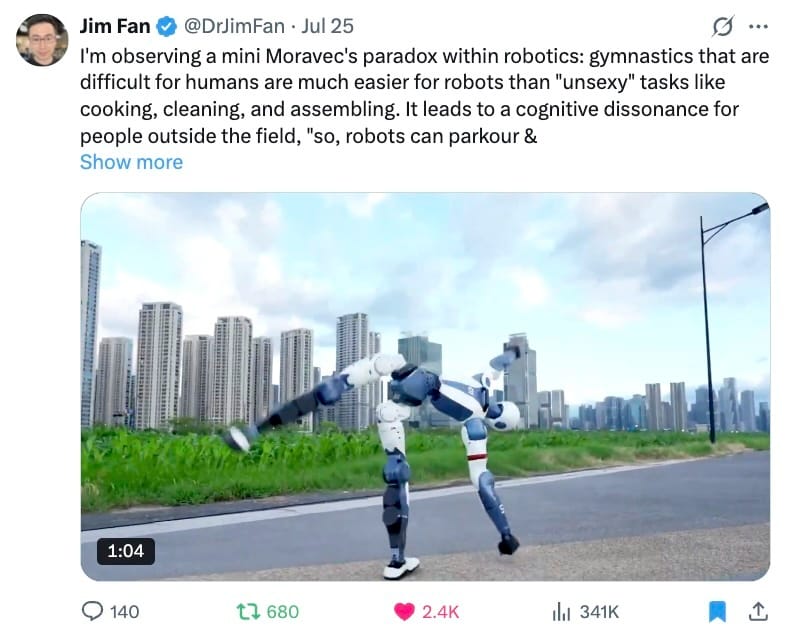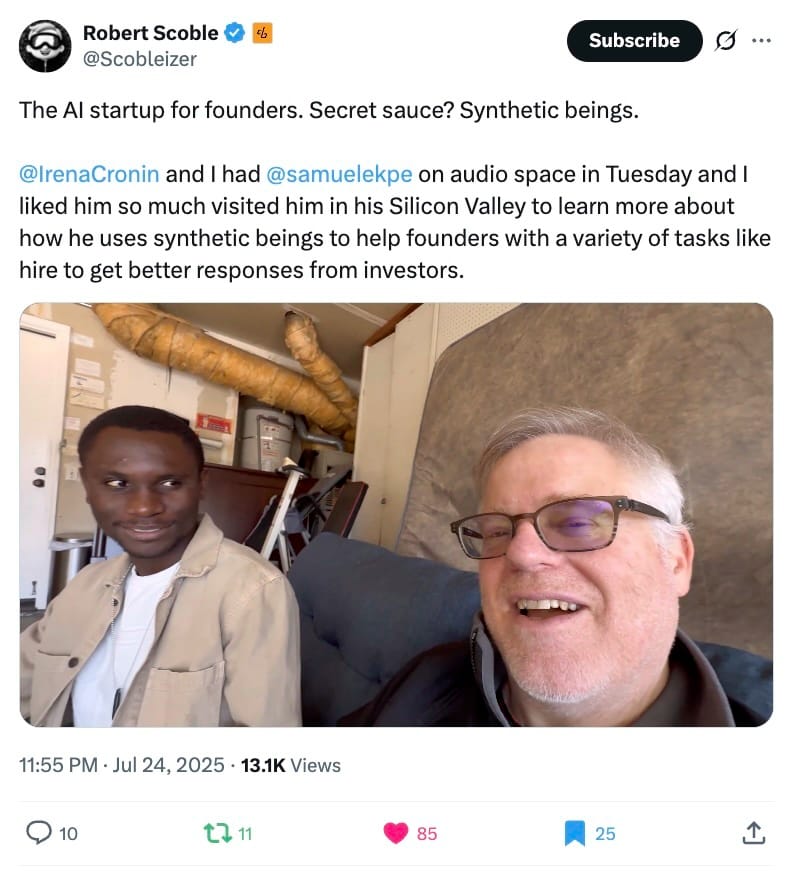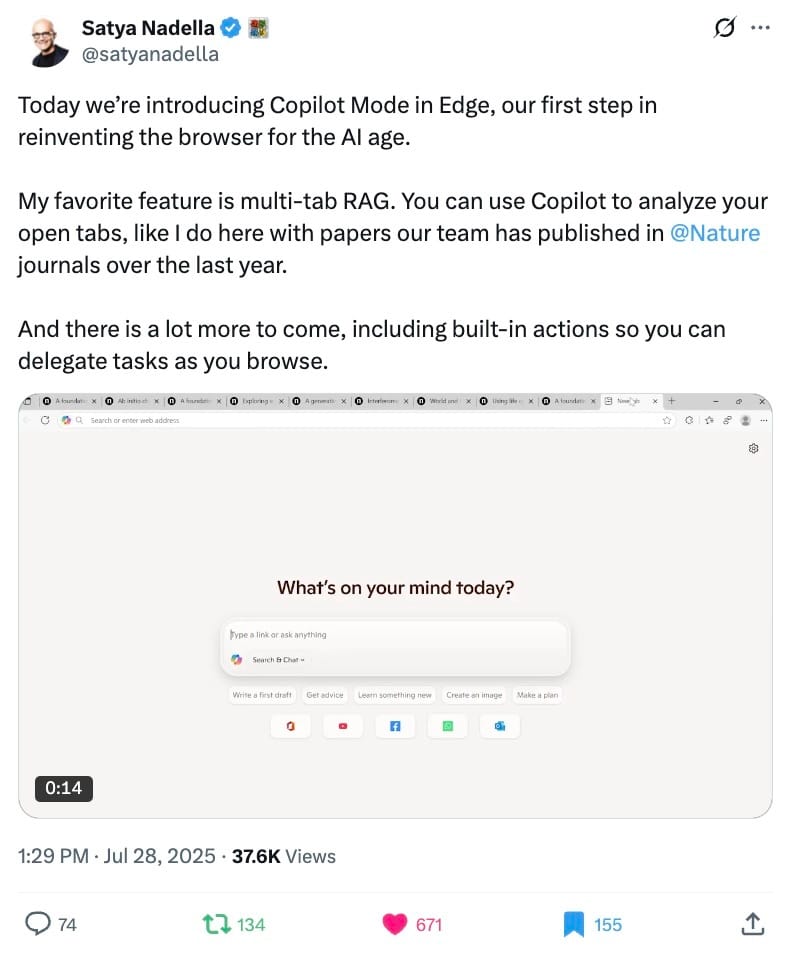- Unaligned Newsletter
- Posts
- The Ethics of Digital Resurrection
The Ethics of Digital Resurrection
Thank you to our Sponsor: PineAI
Pine is an AI-powered autonomous agent that acts on behalf of consumers to contact businesses and resolve issues—like billing, disputes, reservations, cancellations, general inquiries, and applications. Pine handles the back-and-forth for you. Users save time, money, and stress—no waiting on hold, no endless forms, no wasted effort. Just real results.
Try PineAI today!
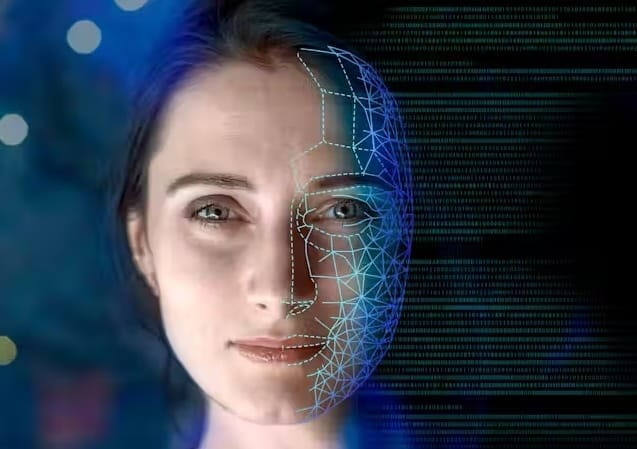
In an era shaped by unprecedented advances in AI, digital resurrection, the use of AI to recreate simulations of deceased individuals, has shifted from a speculative trope in science fiction to an active area of development and moral debate. Whether it is the AI-generated voices of departed celebrities, interactive avatars of lost loved ones, or even posthumous deepfake videos, the idea of reanimating the dead through data-driven methods is no longer a futuristic fantasy. It is a present-day reality that raises fundamental questions about consent, identity, memory, grief, and what it means to be human in a digital age.
Here we explore the concept of digital resurrection in depth. We examine its technological foundations, real-world implementations, emotional implications, and ethical controversies. As AI systems become increasingly capable of emulating language, personality, and behavior, we must confront not just how far we can go but also how far we should go when it comes to resurrecting the dead.
I. What Is Digital Resurrection?
Digital resurrection refers to the recreation of a deceased person’s likeness, whether in voice, image, behavior, or interaction, using digital tools such as machine learning, deep learning, and generative algorithms. These simulations may take many forms:
· Voice clones that replicate a person’s speech patterns and tone
· Chatbots trained on personal messages, emails, or text histories
· Hyper-realistic avatars powered by video and motion capture
· AI models that generate new performances from archival material
Companies and individuals have already experimented with these technologies, often to emotionally powerful or commercially controversial effect. One of the most notable examples includes the use of AI to recreate Anthony Bourdain’s voice in a documentary. Another was the appearance of a deepfake of the late Carrie Fisher in a Star Wars film. Startups have offered services allowing people to “talk” to AI simulations of their lost relatives, while others promise a form of digital immortality by training AI models on a person’s life story, data, and personality.
II. Technological Foundations
The rise of digital resurrection has been fueled by multiple concurrent developments:
Natural Language Processing (NLP): Large language models can now produce human-like dialogue that mirrors an individual's tone and cadence based on relatively limited training data.
Speech Synthesis and Voice Cloning: AI voice generation models can replicate human speech from only a few minutes of audio, allowing the dead to be heard again in their original voice.
Computer Vision and Generative Imagery: Deepfake and generative adversarial network (GAN) technologies enable the creation of synthetic video content that mimics facial expressions, gestures, and movements with uncanny precision.
Memory Integration: Lifelogging tools, email archives, and social media histories provide raw material to train AI on the habits, beliefs, and interpersonal patterns of the deceased.
Combined, these tools allow developers to build increasingly sophisticated reconstructions. But realism is not the only issue. So is authenticity. When does an AI simulation cross the line from remembrance to illusion?
III. Emotional and Psychological Impact
Grief is deeply personal. For some, interacting with a digital simulacrum of a deceased loved one can offer closure, comfort, or catharsis. Others may find such interactions unsettling or even traumatizing. These responses are shaped by several factors:
· The grieving person’s psychological state. Those experiencing intense or unresolved grief may become emotionally dependent on the simulation.
· Cultural and religious beliefs. Many cultures have strict taboos about impersonating the dead or disrupting their rest.
· Expectations of the simulation. If the AI behaves differently from the real person, it may break the illusion and cause distress. If it behaves too similarly, it may create emotional confusion.
· Long-term effects. Over time, the presence of a digital stand-in could impede the natural grieving process, complicating emotional detachment and acceptance.
The question becomes: Is this truly a form of connection or a high-tech manifestation of denial?
IV. Consent and Posthumous Rights
One of the thorniest ethical issues surrounding digital resurrection is the matter of consent. Most people do not leave behind specific instructions about whether or not their likeness, voice, or digital footprint can be used to create a simulation after death. As such, many digital resurrections occur without the explicit permission of the deceased.
This raises multiple questions:
Does a person have the right to control their digital remains after death?
Can their family or estate ethically make those decisions on their behalf?
Should simulations be allowed only if the deceased explicitly opted in before death?
Is it exploitation to use a deceased public figure’s likeness in commercial content?
Legal systems around the world are just beginning to grapple with these challenges. The right to publicity, which protects an individual’s image and likeness, usually expires upon death. But the implications of AI extend far beyond traditional media. It is not just about image rights. It is about simulated presence, posthumous dialogue, and virtual personhood.
Thank you to our Sponsor: Context
Context is the all-in-one AI office suite built for modern teams, seamlessly unifying documents, presentations, research, spreadsheets, and team communication into a single intuitive platform. At its core is the Context Engine, a powerful AI that continuously learns from your past work, integrates with your tools, and makes your workflow a breeze.
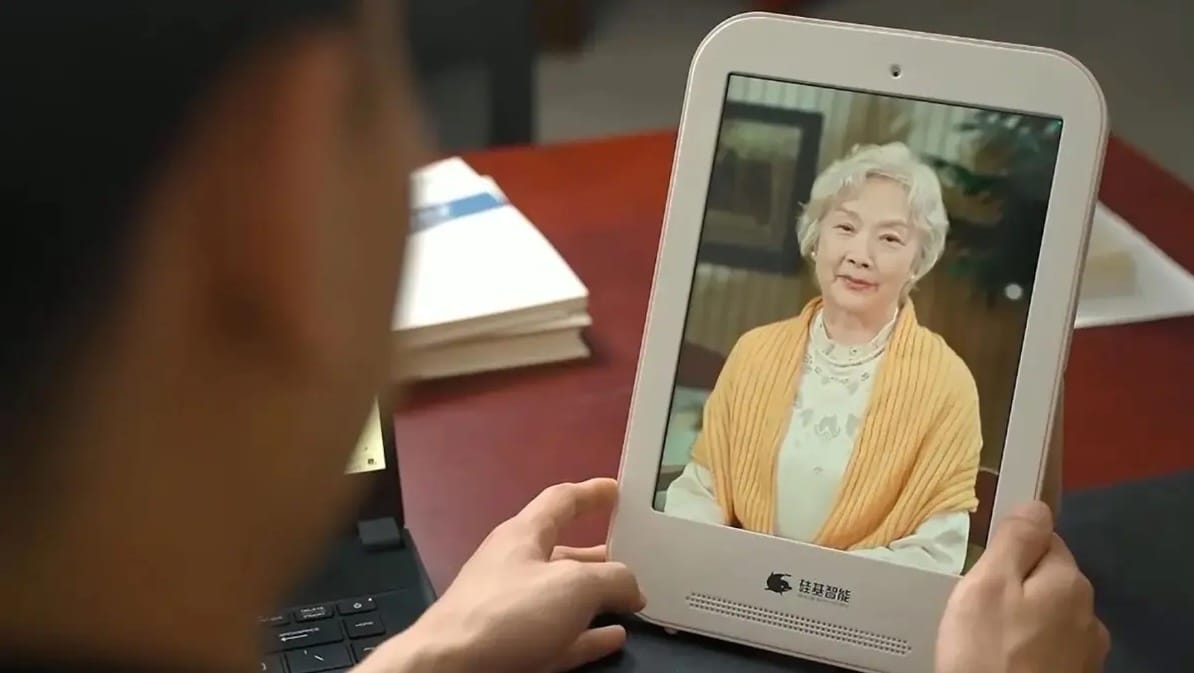
V. Ownership of the Reanimated
Another ethical issue is: Who owns the simulation?
If an AI company creates a digital version of a deceased individual, does the company now own the voice, the likeness, or the simulated personality? What happens if that AI is commercialized, misused, or trained further into a more generalized model?
Ownership becomes even murkier when the data sources are fragmented: social media profiles owned by platforms, voice clips from interviews, and personal photos from family archives. Who has the moral or legal authority to grant access or set boundaries?
There is also the danger of the simulated being manipulated in ways that distort the legacy of the real person, making them appear to express views they never held, endorse products they never supported, or act in ways they never would.
VI. Digital Resurrection and Historical Figures
The question of reanimating the dead does not only apply to personal grieving. Historians, educators, museums, and filmmakers have long used reenactments and actors to bring historical figures to life. AI now makes it possible to create highly interactive simulations of figures like Abraham Lincoln, Frida Kahlo, or Martin Luther King Jr.
While such uses may offer compelling educational experiences, they too raise significant ethical concerns:
· Can the AI truly represent the person’s beliefs or voice without distortion?
· Should simulations of traumatic or sensitive figures, such as Holocaust victims or genocide survivors, be off-limits?
· Does recreating a person also risk trivializing their life or turning history into entertainment?
When we bring the dead back for storytelling or commercial reasons, the line between education and spectacle becomes increasingly thin.
VII. The Illusion of Continuity
There is an important distinction between replicating a person’s communication style and preserving their consciousness. AI, for all its sophistication, does not resurrect a soul or mind. What it does is produce statistical approximations of how a person might have communicated or behaved based on available data.
But many users may not understand this distinction. An AI that answers like your mother, laughs like your spouse, or texts like your friend might be mistaken for something more than a pattern-matching engine. The danger lies in the illusion of continuity. It becomes a psychological projection that this simulation is “them” and not merely about them.
This carries risks of emotional dependency, existential confusion, and false closure.
VIII. Moral Limits and Societal Values
Digital resurrection forces us to confront what we value about personhood, privacy, and memory. Just because we can reanimate someone digitally does not mean we should. Or should certain boundaries be preserved to honor the integrity of death?
Some propose ethical guardrails such as:
· Strict opt-in policies for posthumous simulation
· Clear labeling of AI-generated content as synthetic
· Limitations on commercial exploitation
· Consent protocols for living relatives
· Time-based restrictions on when resurrection becomes acceptable
Ultimately, societies will need to decide where they draw the line between tribute and transgression.
IX. Conclusion: The Ethics of Echoes
Digital resurrection is not just about technology. It is about how we relate to death, memory, and the digital traces we leave behind. As AI makes it easier to simulate the dead, we must weigh the emotional benefits against the ethical risks. Each case may feel personal, but the consequences are cultural.
Are we honoring our dead or appropriating them? Are we seeking healing or refusing to let go? Are we preserving memory or constructing illusion?
As AI grows more powerful and personal, these questions will only become more urgent. We must meet them not with technical answers alone, but with empathy, reflection, and a deep respect for what it means to be human both in life and in death.
Just Three Things
According to Scoble and Cronin, the top three relevant and recent happenings
Vogue’s AI Model Ad Sparks Backlash Over Beauty Standards and Industry Impact
Vogue's August print issue features its first ad with an AI-generated model, created by the company Seraphinne Vallora for Guess. The ad, though labeled as AI in fine print, has sparked backlash over unrealistic beauty standards, diversity concerns, and potential job loss in the modeling industry. Critics argue it undermines years of inclusivity efforts and may harm mental health, especially among young people. While the creators claim their tech supplements rather than replaces human models, their business model emphasizes cost savings from avoiding traditional photoshoots. The ad has reignited debate over transparency, ethics, and the future of fashion modeling. BBC
China Proposes Global AI Governance Body
Chinese Premier Li Qiang has proposed the creation of a new global organization to coordinate AI development and governance. Speaking at the World Artificial Intelligence Conference in Shanghai, he said current efforts are fragmented and warned that AI risks becoming dominated by a few countries and companies. China aims to promote equitable access to AI, especially for the Global South, and is offering to share its technologies and open-source tools. The proposed initiative encourages international collaboration across governments, industry, and academia, with Shanghai suggested as a potential headquarters. This comes amid rising U.S.–China competition in AI and ongoing export controls by Washington. Reuters
Meta Assembles Elite Team for Superintelligence Race
Meta has launched a new Superintelligence Labs division focused on building powerful AI systems. Alexandr Wang, former Scale AI CEO, is leading it as Chief AI Officer. Nat Friedman, former GitHub CEO, is also helping run the lab. Shengjia Zhao, a co-creator of ChatGPT, recently joined Meta as Chief Scientist. Meta is hiring aggressively from OpenAI, Google DeepMind, Anthropic, and Apple. The company is offering massive compensation packages to attract top AI talent. Mark Zuckerberg is personally overseeing the hiring and infrastructure expansion. Meta is investing billions in data centers and AI chips. The effort is seen as a direct challenge to OpenAI and Google. Sam Altman criticized Meta’s recruiting strategy and called it financially motivated. Google DeepMind’s CEO said Meta’s approach makes sense but lacks purpose. Meta wants to catch up in the race to superintelligence by building a top-tier AI team quickly. CNN


